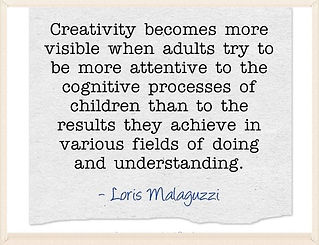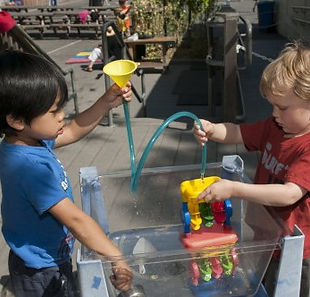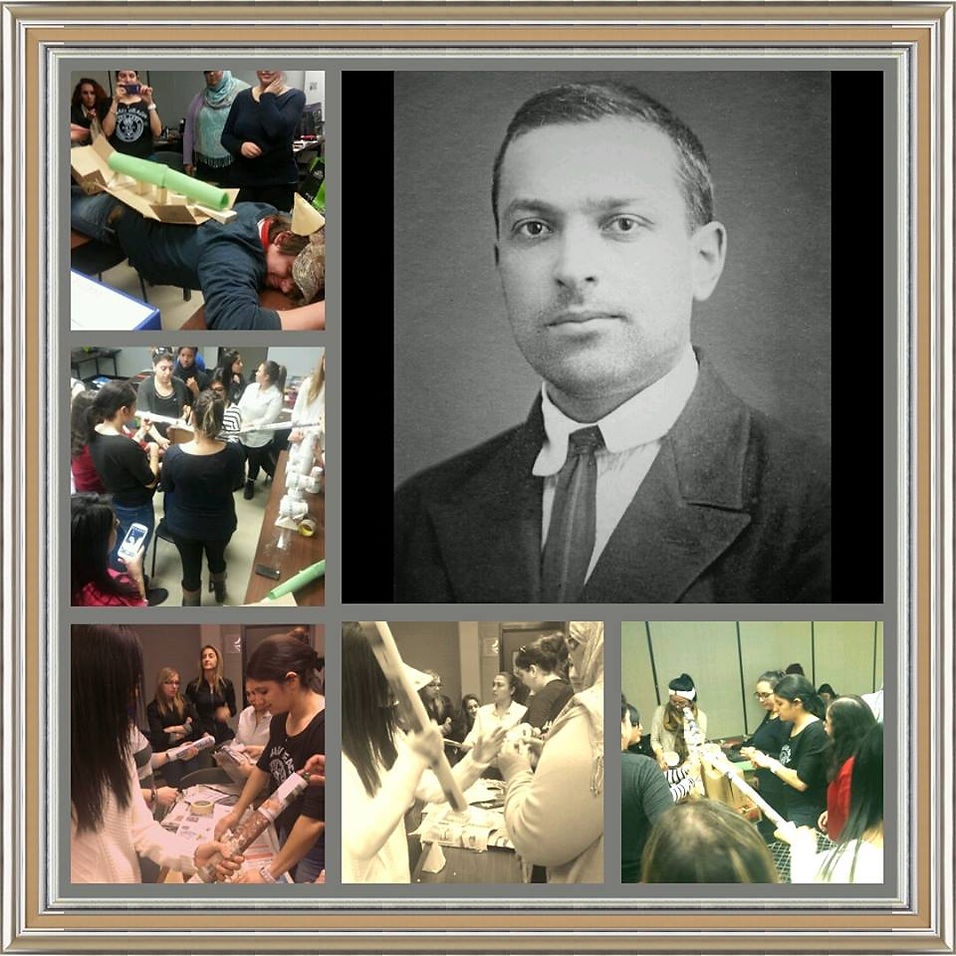Lev Vygotsky
Lev Vygotsky was a theorist who was mainly associated with social constructivism and famously known for his social development theory. Vygotsky believed that by engaging in social interactions, children are capable of learning and understanding new things and achieving more complex levels of cognitive and skill development, regardless of their age (Gibson, 2009).
It is critical for children to interact with others to support learning and cognitive growth, as meaning making involves construing ideas for others, negotiating with others, listening to and accepting views of others and solving problems between conflicting views and ideas (Gibson, 2009). Meaning making is constantly being negotiated and knowledge is being constructed among individuals involved in these social interactions. Language is recognized as an essential role in cognitive development, as children engage in problem solving, conversations, and negotiations with each other (Gibson, 2009).
The zone of proximal development (ZPD) is a concept created by the social cognitive theorist and psychologist Lev Vygotsky. Educators facilitate students cognitive development by scaffolding their progess through higher level functioning (Gibson, 2009). The zone of proximal development is the distance between what the child is able to do independently and what he or she is capable of doing with guidance. At first, the educator guides the child's learning by scaffolding his or her development, ensuring that the distance between the current level and desired level is narrowed. Eventually the child is responsible for shifting his learning, as the educator provides less assistance (Gibson, 2009). Vygotsky believed that the development of intellectual abilities is directly related to the culture in which the child was raised. Individuals part of the same culture groups share common values, languages customs, traditions, and beliefs which can impact experiences, how things are interpreted and the form of communication among others (Gibson, 2009).
Reference:
Gibson, S. (2009). Teaching social studies in elementary schools: A social constructivist approach. Toronto, ON: Thomson Nelson.
Constructivism


Cognitive Constructivism is centered around the individual as a meaning maker. "This view of constructivism is based on the psychological view that the individual constructs knowledge through interactions with his or her environment (Gibson, pp. 27, 2009)."
Social Constructivism
Social Constructivism identifies the social world of learners as playing a significant role in how they understand and make sense of their environment (Gibson, 2009).
Reference:
Gibson, S. (2009). Teaching social studies in elementary schools: A social constructivist approach. Toronto, ON: Thomson Nelson.
URL: http://www.pinterest.com/pin/5190 39925775466711/
The theory of constructivism has roots from the distant past, long ago to Socrates’s dialogues with his followers. During this time, he questioned students in a direct manner that led them to discover the weaknesses within their thinking. The Socratic dialogue is still a critical tool for constructivist educators, as it has shaped individuals understanding of how to plan new learning experiences.
URL: http://www.thirteen.org/edonline/concept2class/constructivism/index_sub4.html
URl: http://www.cds-sf.org/academ ics/constructivism
Gibson, S. (2009). Teaching social studies in elementary schools: A social constructivist approach. Toronto, ON: Thomson Nelson.
Jean Piaget and John Dewey developed theories of child development and education, which led to the evolution of constructivism. Jean Piaget was a Swiss psychologist who believed that cognition is a biological process. His theory of cognitive child development indicated that all children are born with a basic mental structure and progress through the same age-related stages (Gibson, 2009). According to Piaget, maturation is essential to learning, as certain things cannot be understood or learned until the child is at the appropriate developmental stage (Gibson, 2009). These stages are known as, "sensorimotor (birth to 2 years old), preoperational (2 to 7 years old), concrete operational (7 to 11 years old) and formal operational (12 to adulthood) (Gibson, p.27, 2009)". Children construct their own knowledge schemes, which helps them make sense of their environment (Gibson, 2009).
Two Learning Processes:
Assimilation> What is learned is added to previous knowledge
Accommodation> Previous knowledge schemes are altered in order to understand new ideas.
Reference:
Gibson, S. (2009). Teaching social studies in elementary schools: A social constructivist approach. Toronto, ON: Thomson Nelson.
2. Evaluate the theoretical perspectives that support pedagogical documentation

Click the image to view the process of collaborating with others to build a bridge.

More Knowledgable Others (MKO)

Class presentation on Lee Vygotsky in Adult EDUCATION! Half of the class was the 'More Knowledgeable Other' and used the internet as a resource to learn how to make a bridge. Other half of the class collaborated with each other and used their prior knowledge to generate ideas about creating bridges. The presenters, Jasmine, Julia, Farhina and Hina used the Zone OF Proximal Development to scaffold our learning!! — at Seneca College-King Campus.
Social Constructivism
URL: https://www.facebook.com/454426731323824/photos/a.457843604315470.10737418 28.454426731323824/460210014078829/?type=1&theater

Constructing ideas and knowledge by engaging in interactions with others

Creating a "Man made bridge"
"Most knowledgable other & Social Constructivism Together!! Both groups came together to build a bridge and attempt to pass a tiny marble through"
URL: https://www.facebook.com/pages/Discussion-on-Lev-Vygotsky/45442 67 3132 3824
Click the two images to retrieve the videos of students passing marbles through the bridges!



John Dewey has made a major contribution to the development of progressive education in the twentieth century. Unlike traditional models of teaching, progressive education emphasized that students must be invested in what they are learning. Dewey believed that curriculum should be meaningful to the students lives. According to Dewey, students must be actively grounded in experience, which guides the development of practical life skills that are essential to children’s education. He stated, "If you have doubts about how learning happens, engage in sustained inquiry: study, ponder, consider alternative possibilities and arrive at your belief grounded in evidence (Educational Broadcasting Corporation, p.1, 2014)."
URL> https://www.pbs.org/onlyateacher/john.html
URL> http://www.thirteen.org/edonline/concept2class/constructivism/index_sub4.html
Documentation of the learning process, where students are collaborating with peers to learn strategies and new ideas from each other. The constructivist classroom relies greatly on active engagement and collaboration with students. Through this process, the students reflected on previous knowledge to contribute to the construction of the “man made bridges”.
http://www.thirteen.org/edonline/concept2class/constructivism/index_sub2.html


http://2.bp.blogspot.com/-IjXrAkP5GN8/T3WAxlmdD2I/AAAAAAAAAXU/Fn3ysUMvly
s/s640/social-constructivism1.jpg









